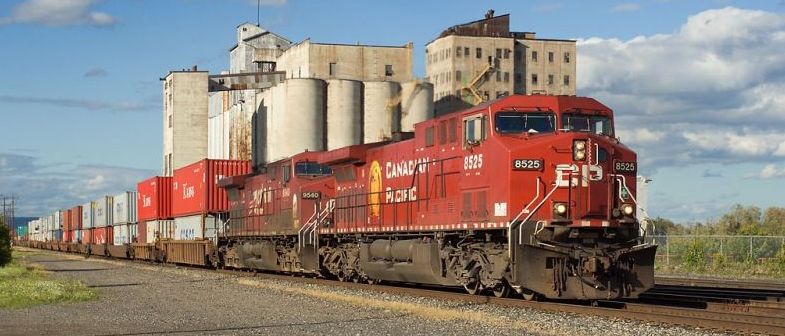
Train Addiction Help Line: 1.866.840.7777
Jan 16, 2018 - N Scale
PWRS Exclusive Micro-Trains CN & BCR 52' Gondola, Fishbelly Side, w/ Drop Ends, w/ Tie Load – UPDATE

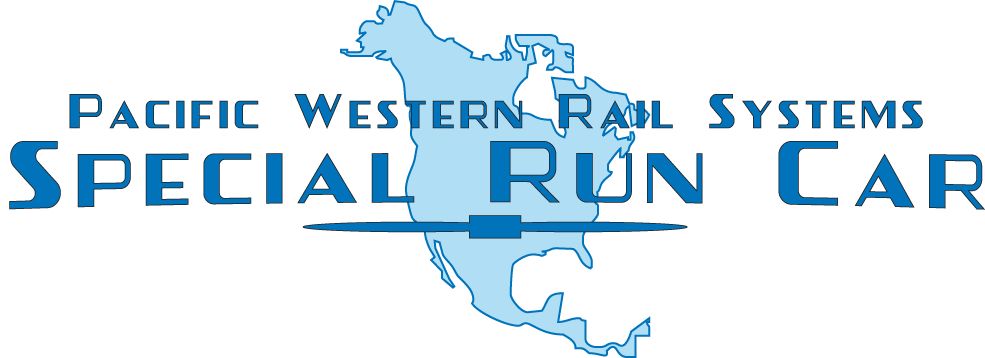

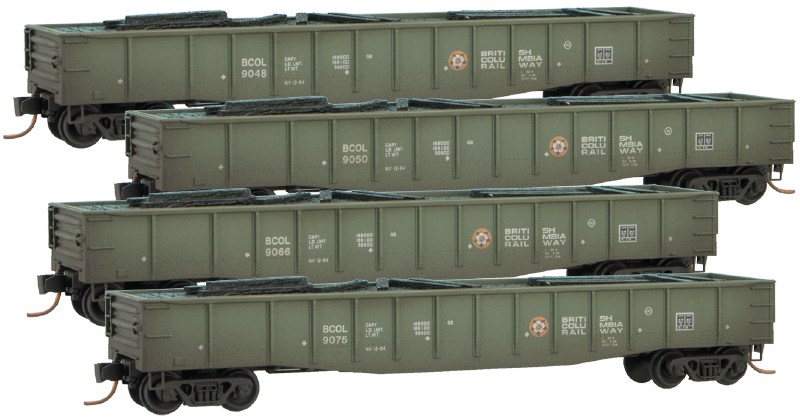
We just received this photo from Micro-Trains and wanted to share it with you. For more photos of the individual cars, click on the SKU listed at the bottom of this media announcement.
The BCOL gondola sets arrived December 2017. They have been very popular and are nearly gone. Order yours now, or lose out – they will not be re-issued.
* * * * *
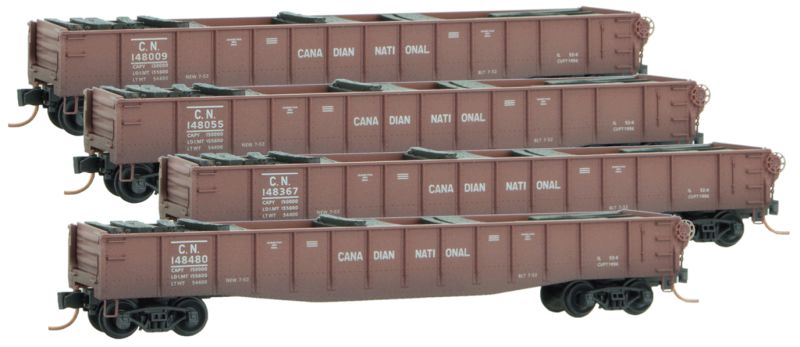
The sets CN Gondola sets arrived here November 2017, and we still have a limited quantity available for sale. Order yours now, or lose out – they will not be re-issued.
* * * * *
PWRS Exclusive Micro-Trains
Canadian National (CN) &
British Columbia Railway (BCOL) 4-packs
52' Gondola, Fishbelly Side, w/ Drop Ends, w/ Tie Load
Pacific Western Rail Systems is pleased to announce our PWRS Exclusive Micro-Trains N Scale Canadian National and British Columbia Railway gondola 4-packs. There will be one 4-pack each with CN road marks and BCOL road marks. As with all PWRS Exclusive Micro-Trains products, these are limited run products that will never be produced again.
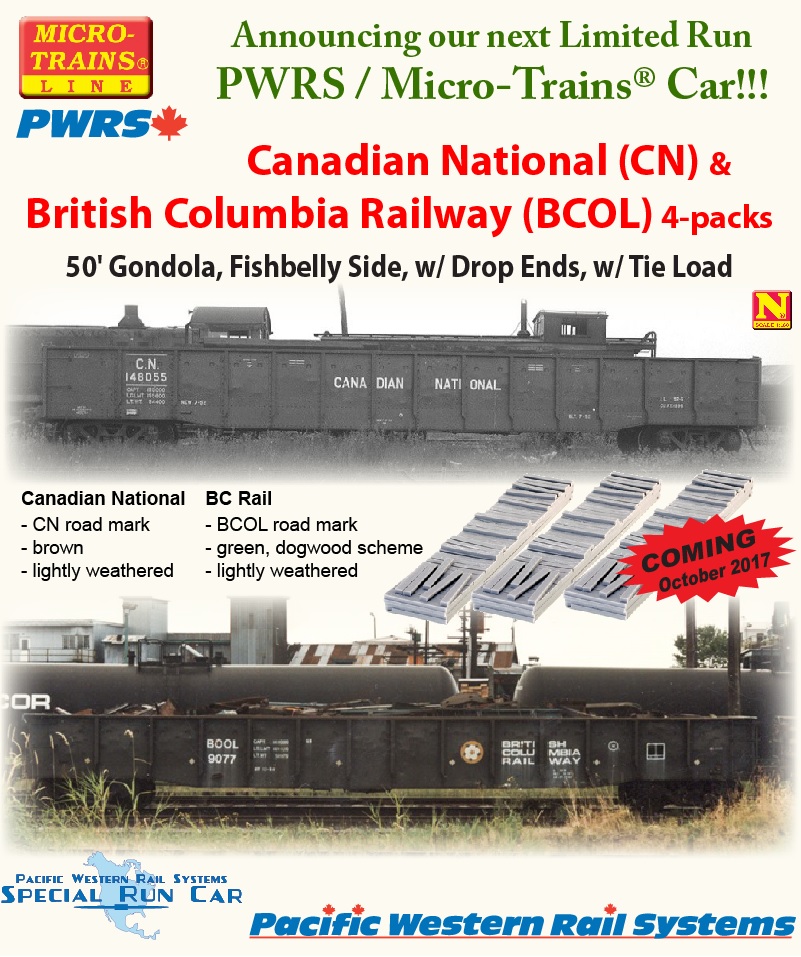
These gondolas are the workhorse of the industry. In US railroad terminology, a gondola is an open-topped rail vehicle used for transporting loose bulk materials. Because of their low side walls gondolas are also suitable for the carriage of such high-density cargos as steel plates or coils, or of bulky items such as prefabricated sections of rail track or scrap metals.
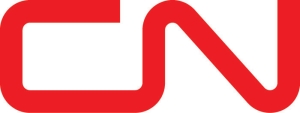 Canadian National (CN) 52’ gondola with fishbelly sides and drop ends is painted brown with white word mark and lettering. It was built in 1952 by Eastern Car Company as part of the CN 148000-148749 series.
Canadian National (CN) 52’ gondola with fishbelly sides and drop ends is painted brown with white word mark and lettering. It was built in 1952 by Eastern Car Company as part of the CN 148000-148749 series.
CN is "North America’s Railroad". In business for nearly 100 years, CN is a world-class transportation leader. Spanning Canada and Middle-America, they are the only transcontinental rail network in North America. At the core of supply chains directly serving about 75 percent of the U.S. population and all major Canadian markets, they extend from the Atlantic and Pacific oceans to the Gulf of Mexico. They offer fully integrated rail service to ports on all three coasts as well as to key cities with connections to all points in North America and beyond.
CN was government-owned, having been a Canadian Crown corporation from its founding to its privatization in 1995. In 1992 a new management team led by ex-federal government bureaucrats, Paul Tellier and Michael Sabia, started preparing CN for privatization by emphasizing increased productivity. This was achieved largely through aggressive cuts to the company's bloated and inefficient management structure, widescale layoffs in its workforce and continued abandonment or sale of its branch lines. In 1993 and 1994 the company experimented with a rebranding that saw the names CN, Grand Trunk Western, and Duluth, Winnipeg, and Pacific replaced under a collective CN North America moniker. In this time, CPR and CN entered into negotiations regarding a possible merger of the two companies. This was later rejected by the federal government, whereupon CPR offered to purchase outright all of CN's lines from Ontario to Nova Scotia, while an unidentified U.S. railroad (rumoured to have been Burlington Northern Railroad) would purchase CN's lines in western Canada. This too was rejected. In 1995, the entire company including its U.S. subsidiaries reverted to using CN exclusively.
 British Columbia Railway (BCOL) 52’ gondola with fishbelly sides and drop ends is painted green with white lettering and the Dogwood logo. It was built in June 1955 by National Steel Car Co. as part of the 9073-9099 Series.
British Columbia Railway (BCOL) 52’ gondola with fishbelly sides and drop ends is painted green with white lettering and the Dogwood logo. It was built in June 1955 by National Steel Car Co. as part of the 9073-9099 Series.
BC Rail (reporting mark BCOL, BCIT), known as the British Columbia Railway between 1972 and 1984 and as the Pacific Great Eastern Railway (PGE) before 1972, was a railway that operated in the Canadian province of British Columbia between 1912 and 2004. It was a class II regional railway and the third-largest in Canada, operating 2,320 km (1,440 mi) of mainline track. Its operations were owned by the public as a crown corporation from 1918 until 2004, when the provincial government leased operations for 999 years to CN. The track and other assets, including a marine division and stevedoring subsidiary as well as large tracts of real estate, remain under public ownership.
Chartered in 1912, the railway was acquired by the provincial government in 1918 after running into financial difficulties. A railway that ran "from nowhere, to nowhere" for over 30 years, neither passing through any major city nor interchanging with any other railway, its southern terminus was at Squamish and its northern terminus at Quesnel during that period. It expanded significantly between 1949 and 1984. Primarily a freight railway, it also offered passenger service, as well as some excursion services, most notably the Royal Hudson excursion train.
Reservations Due By: May 31, 2017
Expected October 2017






